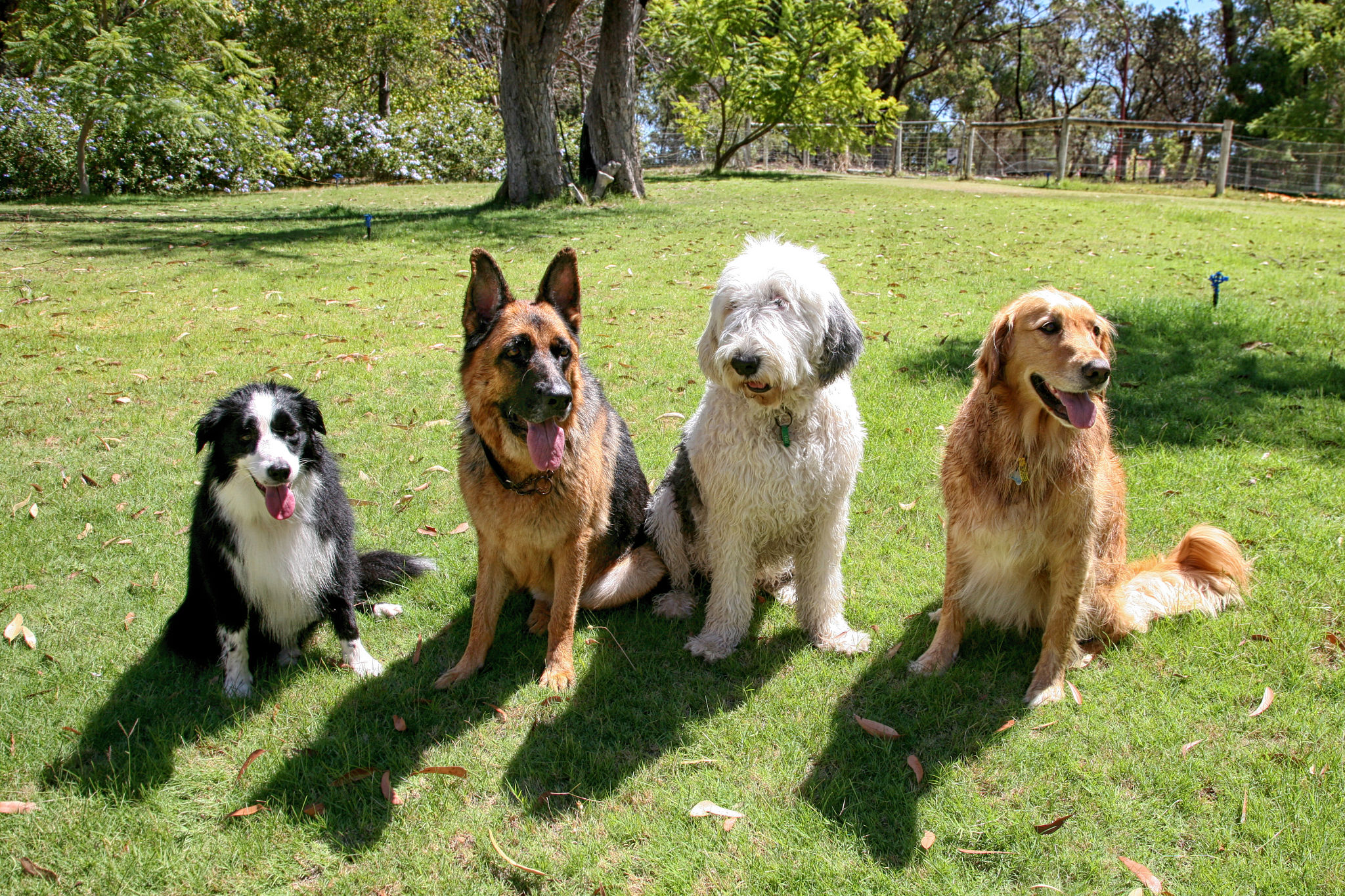Aussie Dog Training Tips: Easy Guide for Success
DR
Effective Techniques for Aussie Dog Training

Training an Australian Shepherd, be it a miniature or a standard one, is not just an obligation but a gratifying journey that strengthens the bond between you and your furry friend. Known for their intelligence, agility, and boundless energy, Australian Shepherds are eager learners and excel in various training activities. But what are the most effective techniques for training your Aussie, and are Australian Shepherds inherently easy to train? Let's delve into some proven methods and discover how to efficiently train your Australian Shepherd dog, ensuring they become well-behaved and cherished members of your family.
Understanding the temperament of the Australian Shepherd is crucial before embarking on any training regimen. These dogs are more than just energetic; they are highly intelligent and possess a keen sense of loyalty. They thrive on mental and physical stimulation, making them ideal companions for active families or individuals who can match their energy levels. Without proper training, however, their high energy can become overwhelming, leading to behavioral issues.
Australian Shepherds are often ranked among the most intelligent dog breeds. This intelligence means they can quickly pick up on new commands and tricks, but it also means they require constant mental challenges to prevent boredom. Engaging their intellect with puzzle toys and interactive games can be a great way to keep their minds sharp.
One of the standout traits of Australian Shepherds is their unwavering loyalty. This loyalty, while endearing, means they form strong bonds with their owners and can become anxious when left alone for extended periods. Building a strong relationship through consistent training and positive reinforcement is key to ensuring a balanced and secure Aussie.
Australian Shepherds are not just pets; they are companions who need to partake in daily activities. Their boundless energy is best managed with regular exercise, such as brisk walks, runs, or play sessions. Activities that combine physical exertion with mental challenges, like agility courses, are particularly beneficial.
In general, Australian Shepherds are considered easy to train due to their intelligence and eagerness to please. However, this ease of training is contingent upon the owner's consistency, patience, and understanding of the breed's unique needs. Training should commence early in the dog's life and be incorporated into their daily routine to channel their energy constructively.
Consistency is perhaps the most critical aspect of training an Australian Shepherd. These dogs thrive on routine and structure, so it's essential to establish and maintain a consistent training schedule. Regular sessions help reinforce learned behaviors and ensure the dog knows what is expected of them.
While Australian Shepherds are quick learners, they are still dogs and may not grasp every command immediately. Patience is vital, as is an understanding of their learning pace. Each dog is unique, and recognizing when your Aussie needs a break or a change in training methods can lead to more successful outcomes.
Starting training early in your Australian Shepherd's life can prevent many common behavioral issues. Puppies are more adaptable and can learn basic commands quickly, setting a solid foundation for more advanced training later on. Early socialization with people and other animals is also crucial to develop a well-rounded and confident adult dog.
When it comes to Aussie dog training, starting with the basics is crucial. These fundamental commands provide a foundation for more advanced skills and ensure your dog is well-behaved in various situations. Here are some essential commands that every Australian Shepherd should learn:
Teaching your Aussie to sit and stay is foundational and serves as the basis for many other commands. Begin by using treats as a reward and positive reinforcement to encourage your dog. Start by holding a treat close to your dog's nose, then move your hand up, allowing their head to follow the treat and causing their bottom to lower. Once they are in a sitting position, say "sit" and give the treat along with affection. Gradually increase the duration of the "stay" command, rewarding them for patience and stillness.

A reliable recall is crucial for any dog, especially energetic breeds like the Australian Shepherd. To train this, use a long leash in a safe, open area. Call your dog's name followed by "come," and use a happy, encouraging tone. Reward them with treats and praise when they come to you. Consistent practice in different environments with varying levels of distraction will strengthen this command, ensuring your dog responds even in challenging situations.
Walking nicely on a leash is important for both the dog and the owner's comfort. Start leash training in a quiet area with minimal distractions. Use treats to keep your dog's focus on you, and practice walking with the leash loose. If your dog pulls, stop walking until they return to your side, then continue. This teaches your dog that pulling gets them nowhere, while walking calmly keeps the adventure going.
Apart from sit, stay, and recall, incorporating other basic obedience commands like "down," "leave it," and "wait" is beneficial. These commands help manage your dog's behavior in public and at home, ensuring they are polite and well-mannered. Positive reinforcement and consistency are key to mastering these skills.
Once your Australian Shepherd has mastered the basics, you can move on to more advanced training techniques to keep their minds engaged and bodies active. These activities not only challenge your dog but also strengthen the bond you share.
Australian Shepherds excel in agility training due to their agility and intelligence. Setting up a simple agility course in your backyard can be a fun and rewarding way to train your dog. Use obstacles like tunnels, jumps, and weave poles to challenge your Aussie and keep them physically active. Regular practice in agility not only hones their skills but also provides an excellent outlet for their energy.
Given their herding instincts, Australian Shepherds enjoy herding activities. If you live in an area where herding classes are available, consider enrolling your dog. These classes can help satisfy your Aussie's natural instincts and provide excellent mental stimulation. Even if formal classes aren't available, you can simulate herding exercises with toys and structured play.
Teaching your Australian Shepherd tricks is not only fun but also mentally stimulating. Start with simple tricks like "shake," "spin," or "roll over," and gradually increase the complexity as your dog masters each one. Trick training sessions should be short and engaging, ensuring your dog enjoys the learning process.
For those looking to take training to the next level, advanced obedience classes can provide a structured environment to refine your dog's skills. These classes often cover more complex commands and behaviors, providing both mental and physical challenges for your Aussie. Participation in these classes can also lead to opportunities in competitive obedience trials.
Even with consistent training, some behavioral issues may arise. Understanding and addressing these issues promptly ensures a harmonious relationship between you and your Australian Shepherd. Here are some common issues and how to address them:
Australian Shepherds can be vocal. To curb excessive barking, identify the cause, whether it's boredom, fear, or attention-seeking. Address the root cause and use commands like "quiet" along with rewards to reinforce calm behavior. Providing plenty of mental and physical stimulation can also reduce the need for your dog to express themselves through barking.
If your Aussie engages in destructive chewing, provide plenty of appropriate chew toys. Ensure they get enough exercise and mental stimulation to prevent boredom-induced chewing. Redirect their chewing to acceptable objects and praise them for choosing the right items. Consistent supervision and management of your dog's environment can prevent unwanted chewing behavior.
Proper socialization is key to a well-behaved dog. Expose your Australian Shepherd to various environments, people, and other animals from a young age. This helps reduce fear and anxiety in new situations. Regular positive experiences with new stimuli build your dog's confidence and adaptability.
Due to their strong bond with their owners, some Australian Shepherds may develop separation anxiety. Gradually acclimating your dog to being alone can help alleviate this issue. Start with short absences and gradually increase the time away, ensuring your dog remains calm and relaxed in your absence. Providing toys and activities to keep them occupied can also help.

If you prefer professional guidance, searching for "Australian Shepherd training near me" can help you find local trainers or classes. Professional trainers offer personalized advice and techniques tailored to your dog's specific needs and temperament.
When selecting a trainer, consider their experience with Australian Shepherds and their training philosophy. Positive reinforcement-based methods are generally the most effective and humane approach. A good trainer will take the time to understand your goals and work with you to achieve them.
Group classes offer socialization opportunities and are often more affordable, while private sessions provide personalized attention and flexibility. Consider your dog's specific needs and your training goals when deciding between the two. Some trainers offer a combination of both, allowing you to benefit from each format.
In addition to local trainers, numerous online resources and courses can guide you through the training process. These can be especially useful if you have a busy schedule or live in a remote area. Online communities and forums also provide support and advice from other Australian Shepherd owners.
For those with miniature Australian Shepherds, the training techniques are similar, but adjust the intensity and duration to fit their smaller size and energy levels. Despite their size, Mini Aussies have the same intelligence and drive as their larger counterparts, so engaging them in both physical and mental activities is crucial.
Training your Australian Shepherd requires patience, consistency, and a deep understanding of their unique characteristics. By starting with basic commands and progressing to advanced activities, you can ensure your Aussie is well-trained and happy. Whether through at-home training or professional classes, the key is to make training a positive and rewarding experience for both you and your dog.
With these techniques, you can successfully train your Australian Shepherd, ensuring they are a well-behaved and cherished member of your family. Remember, the time and effort you invest in training will pay off with a loyal and obedient companion. Your well-trained Aussie will not only be a joy to live with but will also thrive as a confident and engaged part of your life.
Keywords:
mini australian shepherd training, miniature australian shepherd training, australian shepherd training near me, aussie dog training, are australian shepherds easy to train, mini aussie training, how to train australian shepherd dog, aussie puppy training
